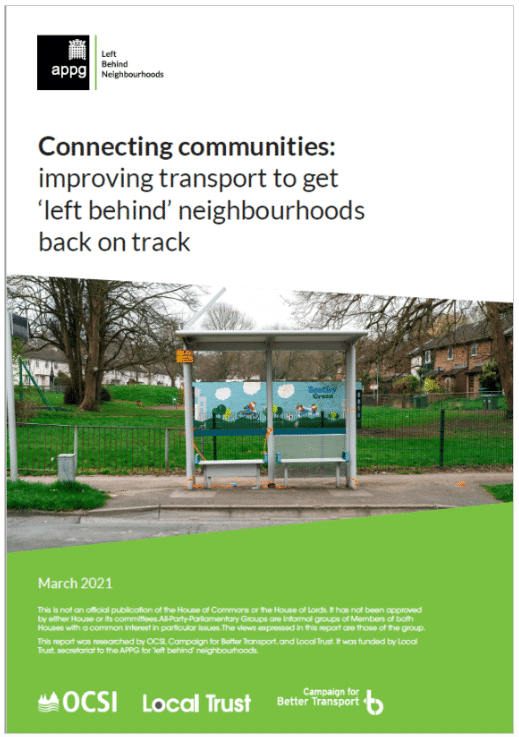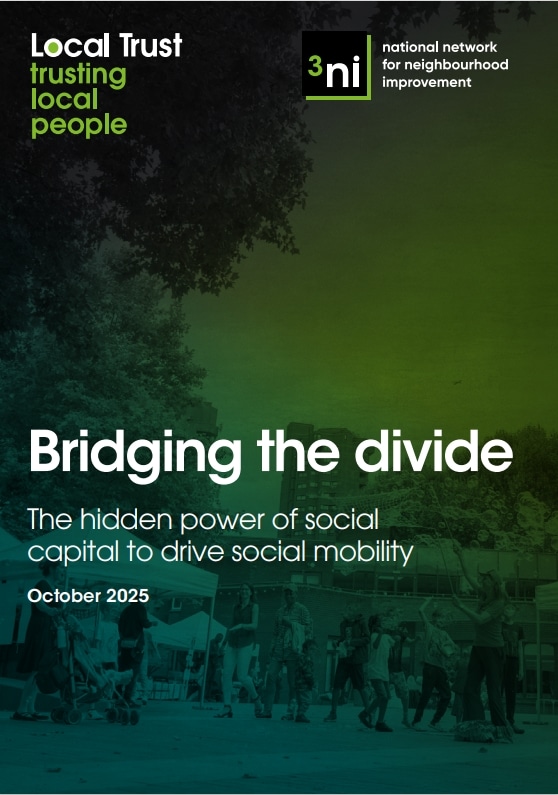Connecting communities: Improving transport to get ‘left behind’ neighbourhoods back on track
Prepared for the All-Party Parliamentary Group for ‘left behind’ neighbourhoods by the Campaign for Better Transport, using data from OCSI, this research explores issues faced by residents in 225 neighbourhoods in England as a result of poor physical connectivity.

Low levels of connectivity are one of the reasons that a place can find itself increasingly ‘left behind’. England’s 225 ‘left behind’ neighbourhoods, home to 2.4 million people, are predominantly located on the peripheries: former mining communities and council estates on the outskirts of post-industrial towns and cities in the North and Midlands, and communities along the North Sea coast.
This report examines how steady bus service decline and rail closures have led to these areas being disconnected and cut off from essential services and amenities. It suggests ways in which hyper-local targeted investment could support them to get back on track, by supporting local government to deliver locally and giving residents the confidence and capacity to address the connectivity challenges they face.
Key findings and recommendations:
- 84 per cent of ‘left behind’ neighbourhoods have worse overall connectivity than the England average.
- 40 per cent of households in ‘left behind’ neighbourhoods have no car, compared to the England average of 26 per cent.
- Local authority-supported bus services in ‘left behind’ neighbourhoods declined by 35 per cent over the previous six years, while commercial services declined by 11 per cent.
Local Trust acted as secretariat to the APPG for ‘left behind’ neighbourhoods over the course of its activities in the 2019-2024 parliament.



